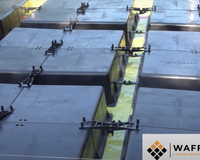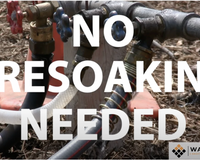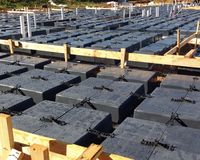Soil is the foundation of your foundation. It can determine everything from the value of your home, the repairs you will have to make, and how long it will stay standing. If it shifts, moves, or expands, your home can experience cracks and structural damage.
Here’s what you need to know about choosing the best soil for construction and how you can keep your home safe from cracks and structural damage:

Why choosing soil matters for home construction
The tools, material, labor, and techniques will all be impacted by what you can learn about your soil. Testing your soil will tell you valuable information about its composition, how it will behave under pressure, and what it does when exposed to water.
Increase your home’s resale value
The integrity of your home is one of the most significant factors used in determining its value. Without structural integrity, your home won’t have the resale value you were hoping for. Knowing which soil is best for building your home will go a long way toward protecting its future value.
Protect your home from structural damage
If your home isn’t on stable soil or built with its soil characteristics in mind, it’s only a matter of time before structural damage becomes a major cause for concern. At best, homeowners are looking at expensive and frequent repairs.
Make better decisions with home design and engineering
Once you know your soil type, you can take the proper steps to ensure you build your home on a stable foundation and use the most efficient methods possible. Knowing the soil type is essential for informing how you’re going to construct a stable foundation.
Four types of soil
OHSA categorizes four types of soil. Each category outlines the capacities of the soil, what it means for construction, and common issues associated with the soil type. You can use this soil types chart to learn more about each soil category and determine which soil is best for building.
Solid rock
Solid rock is the most stable soil of the four categories. It’s great for larger structures and buildings that demand a greater weight-bearing capacity and long-term stability. However, the reliability of a solid rock foundation will also be affected by what the rock is composed of, its size, and the condition you found it in. Rock is commonly perceived as a stable type of soil, but even some types of rock are expansive and subject to seasonal changes.

Type A
Type A soil can be anything from clay or silty clay, to sandy clay. Next to solid rock, Type A soil is considered ideal for most construction projects, including homes and small businesses. Most structures built on Type A soil will not be damaged by movement or expansion in the soil. However, when Type A soil is subjected to changes in moisture content, it can become unstable.

Type B
If Type A soil is exposed to previous excavation, groundwater, or vibrations, it should be downgraded to Type B soil. Type B soil includes sandy loam, unstable rock, silt, and medium clays. If you’re working with this type of soil, you should take extra precautions to avoid the effects of soil instability and conditions in the surrounding environment.

Type C
Type C soils are considered the least stable and are prone to causing structural defaults. This includes soils that are frequently submerged in water, layered with many soil types, and those that have been recently disturbed. Without specialized structural protections on the foundation and surrounding soil, construction with this soil type can be dangerous.

What kind of soil does Texas have?

The Blackland Prairies, which extend from the Red River in the north to San Antonio in the south, don’t have ideal soil for construction. Much of the land you’ll find in this region contains expansive clay, but that doesn’t mean you can’t build your home here.
The hill country in central Texas consists mainly of clay loam, also prone to expansion but more suitable for construction. This area also contains sloped land and sandy areas that are prone to shifting.
Many homeowners and engineers aren’t fully aware of the risks of soil expansion and instability that affect much of the state. Using the proper techniques, planning, and referring to your soil types chart, you can still build a structurally sound home.
Suitable foundation for sandy soil and expansive clay
If you’re working with sandy soil or expansive clay, don’t worry. You can still build a stable foundation if you use the right techniques. Using the Wafflemat system you can protect your home against soil movements and expansion.
The Wafflemat system is designed to accommodate soil movement so that foundations stay strong without cracking. It works on expanding, rocky, and hydro collapsible soils. You don’t even have to dig, saving you a lot of time and money on your construction project.
Learn more about soil movement and how you can make sure your foundation is stable with the Wafflemat Foundation System.





